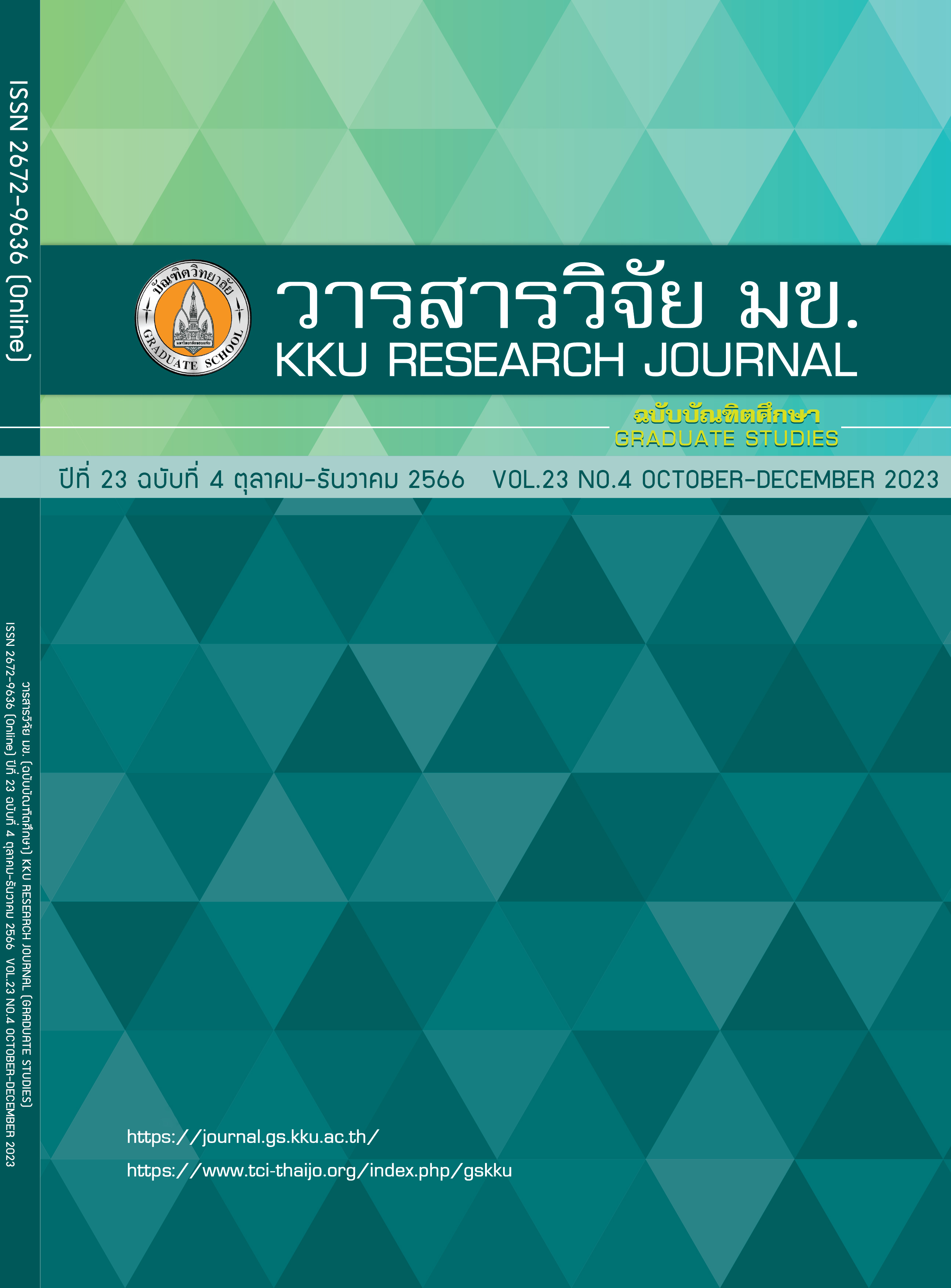Evaluating the Green-Ampt and SCS-CN Loss Methods based on Extreme Inflow Events of the Lam Pao Reservoir
Keywords:
HEC-HMS hydrological model, SCS-CN method, Green-Ampt methodAbstract
This study aimed to evaluate two loss approaches of the HEC-HMS model, which were the Green-Ampt and SCS-CN, for simulating inflow to the Lam Pao reservoir. For direct runoff, baseflow, and routing simulations in the model, Snyder unit hydrograph, linear reservoir, and Muskingum methods, respectively, were used with the two approaches. The catchment of the reservoir was delineated in the HEC-HMS software and its characteristics were extracted from a Digital Elevation Model of 30 m x 30m. Daily runoff data observed during the five flood events (in 2010, 2011, 2017, 2018, and 2019) at the three monitoring stations (E.65, E.76A and Lam Pao Dam) was used for calibration and validation of the model. To evaluate the model, the coefficients of determination, Nash-Sutcliffe efficiency, percentage errors in peak, percentage errors in volume were used. The results revealed that runoff simulated by the model using the SCS-CN approach was more reliable than that simulated by the model using the Green-Ampt approach. This study can be a good example for future hydrological modeling of flood forecasting in Thailand.
References
Royal Irrigation Department. Kalasin Provincial Irrigation Office [Internet]. Available from: https://sites.google.com/site/chlprathanlapaw/ Thai.
Royal Irrigation Department. Using HEC-HMS Model Work Manual. Vol. 1. 2018. 32 p. Thai.
Katwal R, Li J, Zhang T, Hu C, Rafique MA, Zheng Y. Event-based and continous flood modeling in Zijinguan watershed, Northern China. Natural Hazards. 2021; 108(1): 733–753.
Kabiri R, Ramani B, Chan A. Using Green-Ampt Loss Method in Surface Runoff Simulationff Klang Watershed in West Malaysia. Advances in Environment, Computational Chemistry and Bioscience. 2012; 217–222.
Oleyiblo JO, Li ZJ. Application of HEC-HMS for flood forecasting in Misai and Wan’an catchments in China. Water Science and Engineering. 2010; 3(1): 14–22.
Halwatura D, Najim MMM. Application of the HEC-HMS model for runoff simulation in a tropical catchment. Environmental Modelling and Software. 2013; 46: 155–162.
Lohpaisankrit W, Hiranwattananon T, Tumma N. Application of a rainfall-runoff model for flood generation in the Huai Sangka catchment Thailand. Engineering and Applied Science Research. 2021; 48(2): 121–130.
Kaewthong N, Ditthakit P, Nakrod S, Buathongkhue C. The Application of HEC-HMS and HEC-RAS Mathematical Models for Study of Flood Mitigation in Cha-Uat, Nakhon Si Thammarat. Journal of Science and Technology Mahasarakham University. 2019; 39(3): 264–272. Thai.
Gunathilake MB, Panditharathne P, Gunathilake AS, Warakagoda ND. Application of a hec-hms model on event-based simulations in a tropical watershed. Eng Appl Sci Res. 2020; 47(4): 349–360.
US Army Corps of Engineers. HEC-HMS Technical Reference Manual. Hydrologic Engineering Center (HEC). 2021.
El Hassan AA, Sharif HO, Jackson T, Chintalapudi S. Performance of a conceptual and physically based model in simulating the response of a semi-urbanized watershed in San Antonio, Texas. Hydrological Processes. 2013; 27(24): 3394–3408.
Downloads
Published
Issue
Section
License
Copyright (c) 2023 KKU Research Journal (Graduate Studies)

This work is licensed under a Creative Commons Attribution-NonCommercial-NoDerivatives 4.0 International License.



